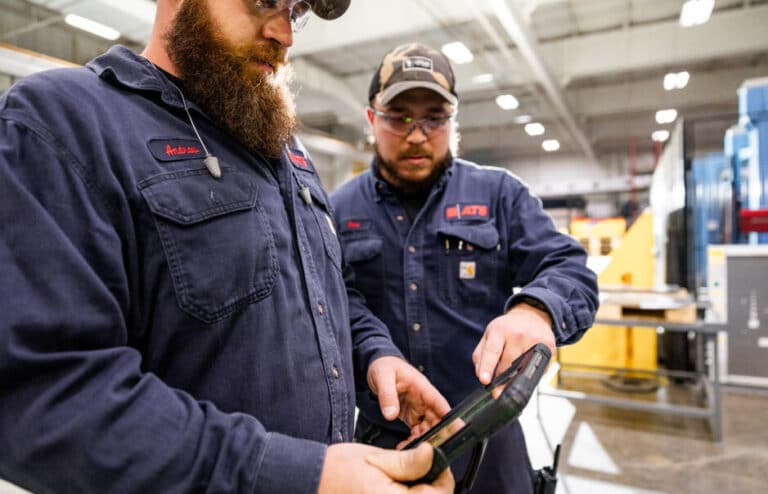Problem prevention is almost always cheaper and faster than making fixes later. This is the principle behind failure mode and effects analysis (FMEA), a structured approach to identifying what could go wrong and prioritizing which should be addressed first.
Design failure mode and effects analysis (DFMEA) is a form of FMEA tailored to the product design process. Though often used for consumer products, it can also be applied to manufacturing machinery and even complete production lines. In such scenarios, it helps improve reliability and uptime, informs maintenance planning and contributes to better safety and lower costs.
This blog describes the DFMEA process and explains its contribution to asset management.
What is DFMEA?
FMEA is a methodical approach to determining everything that could go wrong, then estimating the probability of each one, the likely impact and difficulty of detection. This results in a list of events or factors to consider, ranked by risk priority number (RPN), which is the product of probability, impact and detection difficulty scores.
A design FMEA is this process applied to the design of a product. Its purpose is to improve a design by finding weaknesses before the product moves into prototyping and testing.
A cross functional team estimates values for probability, impact and difficulty of detection, using a 1-10 scale for each. They then calculate RPNs for every possible failure mode.
How DFMEA contributes to asset management?
While often considered a tool for improving the design of consumer and other high volume products, a strong argument can be made for making it a part of the process for designing manufacturing equipment. Regardless of whether the design is for a one-off, a custom production machine or line, or for a series of machines to be sold in quantity, a DFMEA will improve reliability and safety while reducing product variability.
In addition to early identification of potential failure modes when changes are made quicker and with less impact on assembly and delivery, a DFMEA can also inform maintenance recommendations. Aspects such as bearing and slideway lubrication and pump operation might for example be identified as having high RPNs. Once this is known, decisions can be taken to:
- Modify the design
- Recommend appropriate preventive maintenance actions
- Incorporate additional sensors
- Implement condition monitoring
In practice, actions to reduce RPNs for specific failure modes use some or all of these approaches in combination.
Why and when to utilize design failure mode and effects analysis
There are three situations in which a DFMEA should be initiated. These are:
- When designing a new product, machine or production line
- When modifying an existing design
- When the environment into which the equipment is going changes substantially, OR when the duty cycle changes
The best time for a DFMEA is when all the design details have been defined, but before purchase orders and manufacturing instructions are issued or build has started. This is when there’s enough information to undertake a detailed study but while changes are feasible with limited cost or build schedule delays.
How does DFMEA work?
A DFMEA prioritizes areas where changes will improve overall performance. This lets management target resources and effort to a few areas that will make a measurable difference in reliability, safety and output.
Where data is available to show how the existing design performs (as when changes are being made), probability, impact and difficulty of detection scores can be developed mathematically. In the case of a new design or a radically different use case, however, these scores are inevitably subjective.
How to conduct a DFMEA
Having formed a team and defined the goals of the exercise, the usual sequence is:
1. Review the design: Members of the DFMEA team need to understand the design, what it is for, how it will be used and who will use it.
2. Identify possible failure modes: This is usually done in a brainstorming process to get as many different contributions as possible. The team should recognize the five types of failure:
- Complete loss of function.
- Partial breakdown — Part of the equipment stops working but some functionality remains. For example, an andon light display might fail, but this wouldn’t prevent the machine from running.
- Intermittent stoppages — Electrical noise can cause intermittent faults that are very hard to diagnose.
- Reduced performance — The equipment has to run at less than full speed, as might be caused by an out-of-balance condition.
- External failure — An example would be a power failure, for which the design team might want to ensure the machine goes into some form of safe shutdown mode.
3. Determine the consequences of each failure mode: This could range from nothing to complete loss of output. Special attention should be paid to any safety consequences.
4. Assign severity score: Use a 1-10 scale with safety issues in particular being awarded a 9 or 10.
5. Identify root causes: This is the first step in finding a solution, and the approach is similar to that used for root cause failure analysis in manufacturing.
6. Assess existing design controls: Understand how existing design processes may contribute to design failings and identify any changes needed.
7. Assign occurrence scores: Think of this as the probability of a failure mode occurring. If it’s inevitable, score it 10 and if it’s extraordinarily unlikely it gets a 1.
8. Assign difficulty of detection scores: This is a measure of whether existing controls, such as design reviews, would catch each failure mode. Assign higher scores to failure modes that would be harder to detect.
9. Calculate RPNs: For each failure mode, multiply the severity, occurrence and detection scores. Failure modes should then be ranked by RPN to identify the highest priority issues.
10. Determine mitigation actions: Focus on failure modes with the highest RPNs and determine ways of preventing their occurrence, reducing their impact and improving detection systems.
11. Implement/recalculate the RPNs: Nothing is achieved until the improved actions are put in place. Verify the actions taken have reduced the risks of failure. If failure modes with high RPNs remain, implement a further action plan.
What to avoid when conducting DFMEA
There are ways the DFMEA process can go astray and lead to ineffective results. This will undermine any future DFMEA exercises. Four points to consider are:
- Not considering the manufacturing process: Equipment design and the manufacturing process are tied tightly together. If a separate Process FMEA is not conducted, be sure to include process failure modes and process experts in the DFMEA.
- Don’t assign DFMEA responsibility to Quality: Even though FMEA is considered a Quality tool, a DFMEA should be driven by people with detailed knowledge of the equipment design.
- Avoid forming a design-only team: It’s important to have a blend of backgrounds and experiences. Maintenance people can often offer valuable perspectives.
Benefits of DFMEA
Determining what could go wrong with a product or the design process can seem like a distraction for an action-oriented engineering team. One way of overcoming resistance is by highlighting the many benefits:
- Save on testing: Identifying potential weaknesses and making changes during the design phase can reduce the number of tests needed to verify performance.
- Avoid startup and commissioning delays: Fewer design problems are found during assembly and installation.
- Improve equipment maintainability: Having included representatives from Maintenance in the DFMEA team, more consideration has been paid to features that make the equipment easier to inspect and service.
- Increase equipment reliability: Reducing failure mode RPNs ensures the machinery will run with fewer problems.
- Safer operation: A thorough DFMEA will find any potential safety hazards, so improvements can be made.
- Reduce product variation: More stable operation and elimination of microstoppages improve the quality of product coming off the designed equipment.
- Higher customer satisfaction: When manufacturing machinery and production lines run trouble-free the customer is more likely to return with new business.
Ask ATS for maintenance-related DFMEA examples
DFMEA is a proven tool for improving product performance. Applied to industrial machinery, it reduces installation and commissioning delays while improving safety and reliability. As the pioneer in outsourced factory maintenance, ATS helps manufacturers improve equipment availability and performance while managing servicing and repair costs. Contact us for more information.


